2018-08-23 - Nº 173

Editorial
Esta é a Newsletter Nº 173 que se apresenta com o mesmo formato que as anteriores. Se gostar da Newsletter partilhe-a!
Todas as Newsletters encontram-se indexadas no link.
Esta Newsletter tem os seguintes tópicos:
Faz hoje anos que nascia, em 1842, Osborne Reynolds. Este Irlandês nascido em Belfast ficou conhecido pelos seus trabalhos na área da dinâmica dos fluidos e da hidrodinâmica.
Faz também anos hoje que nascia, em 1875, William Eccles. Este Físico britânico foi pioneiro no desenvolvimento da comunicação de rádio. Ele foi um dos primeiros proponentes da teoria de Oliver Heaviside de que uma camada superior da atmosfera reflecte as ondas de rádio, possibilitando sua transmissão por longas distâncias. Ele também sugeriu em 1912 que a radiação solar era responsável pelas diferenças na propagação de ondas durante o dia e a noite. Ele experimentou detectores e amplificadores de recepção de rádio, definiu o termo "díodo" e estudou as perturbações atmosféricas da recepção de rádio. Depois da Primeira Guerra Mundial, ele fez muitas contribuições para o desenvolvimento de circuitos electrónicos, incluindo o "flip-flop" Eccles-Jordan patenteado em 1918 e usado em contadores binários (trabalhando com F.W. Jordan).
Faz igualmente anos hoje que nascia, em 1885, Henry Tizard. Este químico Inglês conjuntamente com David Pye, desenvolveu o seu trabalho em combustíveis para aeronaves que acabou de levar ao sistema de classificação de octanas, que expressa as características antidetonantes do combustível. Nos anos 1930-40, ele aconselhou o governo britânico nos aspectos científicos da defesa aérea, particularmente o radar. Ele liderou uma missão de levar cientistas britânicos e canadianos aos EUA para informar representantes oficiais americanos sobre dispositivos em desenvolvimento activo para uso em guerras e para obter o apoio de cientistas americanos. Assim começou uma estreita cooperação de cientistas anglo-americanos em campos como aeronáutica e foguetes. Sua influência provavelmente fez a diferença entre a derrota ou a vitória na Batalha da Grã-Bretanha em 1940.
Faz também anos hoje que nascia, em 1923, Edgar F. Codd. Este matemático e cientista da computação inglês, enquanto trabalhava para a IBM, inventou o modelo relacional para gestão de bases de dados, a base teórica para bases de dados relacionais e sistemas de gestão de base de dados relacional. Ele fez outras contribuições valiosas para a ciência da computação, mas o modelo relacional, uma teoria geral muito influente da gestão de dados, continua a ser a sua conquista mais mencionada, analisada e celebrada. Ele também contribuiu com conhecimento na área de autómatos celulares.
Por fim, faz anos hoje que nascia, em 1933, Robert Curl. Este Químico norte-americano que (com Richard E. Smalley e Sir Harold W. Kroto) descobriu o primeiro fulereno, um aglomerado esférico de átomos de carbono, em 1985. A descoberta abriu um novo ramo da química, e os três homens receberam o Prémio Nobel da Química em 1996 pelo seu trabalho. Em setembro de 1985, Curl encontrou-se com Kroto, da Universidade de Sussex, Eng, e Smalley, um colega de Rice, e, em 11 dias de pesquisa, eles descobriram os fulerenos. Eles anunciaram as suas descobertas ao público na edição de 14 de Novembro de 1985 da revista Nature.
Nesta semana que passou ficámos a saber que o maior recife de coral do mundo impresso em 3D encontra-se instalado no Maldives Island Resort. Em todo o mundo, várias iniciativas têm explorado o uso da impressão 3D para ajudar a preservar os recifes de corais delicados e em rápido desaparecimento. Agora, num importante desenvolvimento, o maior recife de coral impresso em 3D do mundo foi submerso na Ilha de Verão das Maldivas, um resort de férias no país do Oceano Índico.
Também esta semana a A Stratolaunch anunciou a sua nova família de veículos de lançamento que entrará em operação regular a partir de 2020. O exclusivo sistema de lançamento aéreo da empresa utilizará a maior aeronave do mundo como plataforma de lançamento móvel, capaz de lançar veículos que transportarão satélites para múltiplas órbitas e inclinações numa única missão. Com esses novos veículos, a Stratolaunch está pronta para tornar o acesso ao espaço conveniente, acessível e rotineiro.
Ainda esta semana foi confirmada a existência de gelo nos pólos da Lua. Nas partes mais escuras e mais frias das suas regiões polares, uma equipa de cientistas observou directamente evidências definitivas de gelo de água na superfície da Lua. Esses depósitos de gelo são distribuídos de forma irregular e podem ser antigos. No pólo sul, a maior parte do gelo está concentrada nas crateras lunares, enquanto o gelo do pólo norte é mais amplamente distribuído. A equipa de cientistas, liderada por Shuai Li da Universidade do Havaí e Brown University e incluindo Richard Elphic do Centro de Pesquisa Ames da NASA em Silicon Valley, usou dados do instrumento Moon Mineralogy Mapper (M3) da NASA para identificar três assinaturas específicas que definitivamente comprovam há gelo de água na superfície da lua.
Na Newsletter desta semana apresentamos diversos projetos de maker assim como um modelo 3D que poderá ser útil. É apresentada a revista hackspace nº10.
 João Alves ([email protected])
João Alves ([email protected])
O conteúdo da Newsletter encontra-se sob a licença  Creative Commons Attribution-NonCommercial-ShareAlike 4.0 International License.
Creative Commons Attribution-NonCommercial-ShareAlike 4.0 International License.
Novidades da Semana

World’s Largest 3D Printed Coral Reef Installed At Maldives Island Resort
"Across the globe, a number of initiatives have been exploring the use of 3D printing to help preserve the delicate and quickly disappearing coral reefs. Now, in an exciting development, the world’s largest 3D printed coral reef has been submerged at Summer Island Maldives, a vacation resort on the Indian Ocean nation. Global warming is having drastic effects on most of the world’s ecosystems, but perhaps none is deteriorating as quickly as the world’s coral reefs. The delicate ecosystems, which are home to varied aquatic species—from algae and invertebrates to fish and sea birds—have suffered from a phenomenon called bleaching, which is when coral polyps reject the algae that live inside their tissues and that is caused by increasing sea temperatures. In a bid to curb the destruction of these rich underwater ecosystems, certain groups have been exploring the potential of 3D printing artificial reefs to encourage the growth of natural coral and sustain the species that depend on it for protection. One of those groups is the Melbourne-based Reef Design Lab, which is now responsible for installing the world’s largest 3D printed coral reef in the Maldives." [...]

Stratolaunch Announces New Launch Vehicles
"Stratolaunch announces today its new family of launch vehicles that will enter regular service starting in 2020. The company’s unique air-launch system will use the world’s largest aircraft as a mobile launch platform, capable of deploying launch vehicles that will carry satellites to multiple orbits and inclinations on a single mission. With these new vehicles, Stratolaunch is poised to make access to space convenient, affordable, and routine. “We are excited to share for the first time some details about the development of our own, proprietary Stratolaunch launch vehicles, with which we will offer a flexible launch capability unlike any other,” said Jean Floyd, Chief Executive Officer at Stratolaunch. “Whatever the payload, whatever the orbit, getting your satellite into space will soon be as easy as booking an airline flight.” The updated launch offering from Stratolaunch includes the following vehicles: - Pegasus: With its existing track record of over 35 successful launches, Pegasus provides dependable access to orbit. - Capability: 370 kg payload* for a single or triple configuration - Status: Flight proven, integration and testing ongoing with first flight in 2020 - Medium Launch Vehicle (MLV): A new medium-class air-launch vehicle optimized for short satellite integration timelines, affordable launch and flexible launch profiles." [...]
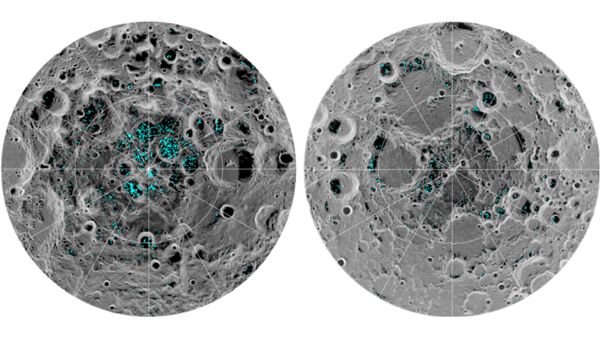
Ice Confirmed at the Moon's Poles
"In the darkest and coldest parts of its polar regions, a team of scientists has directly observed definitive evidence of water ice on the Moon's surface. These ice deposits are patchily distributed and could possibly be ancient. At the southern pole, most of the ice is concentrated at lunar craters, while the northern pole's ice is more widely, but sparsely spread. A team of scientists, led by Shuai Li of the University of Hawaii and Brown University and including Richard Elphic from NASA's Ames Research Center in California's Silicon Valley, used data from NASA's Moon Mineralogy Mapper (M3) instrument to identify three specific signatures that definitively prove there is water ice at the surface of the Moon. M3, aboard the Chandrayaan-1 spacecraft, launched in 2008 by the Indian Space Research Organization, was uniquely equipped to confirm the presence of solid ice on the Moon. It collected data that not only picked up the reflective properties we'd expect from ice, but was able to directly measure the distinctive way its molecules absorb infrared light, so it can differentiate between liquid water or vapor and solid ice." [...]
Outras Notícias
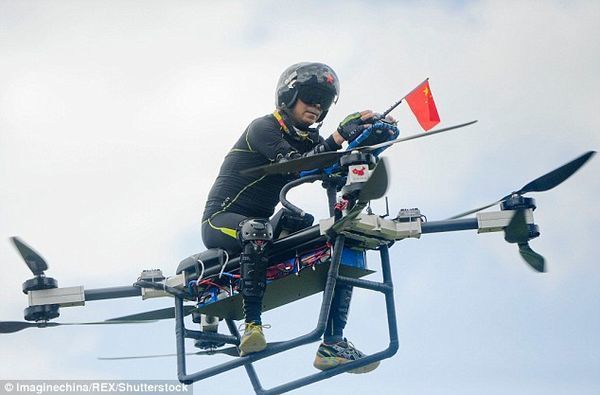
It's a 'flying motorbike'! Impressive homemade drone takes off with its Chinese inventor on board
"A homemade 'flying motorcycle' has taken to the skies, with its inventor on board. Zhao Deli, 40, was lifted into the air by eight propellers in Tangxia town, Dongguan city, south China's Guangdong province. Mr Zhao designed and built the drone himself and - dressed in an all-black protective suit - embarked on the extraordinary flight test on Monday. The drone's propellers are affixed to a central frame which is designed to be as lightweight as possible. The aircraft has a motor installed under the seat, which provides the power for the drone while the rider perches at the top. Before Monday's flight, the amateur inventor had put the unusual aircraft under unmanned tests for 1,559 times in the space of two years." [...]
Ciência e Tecnologia
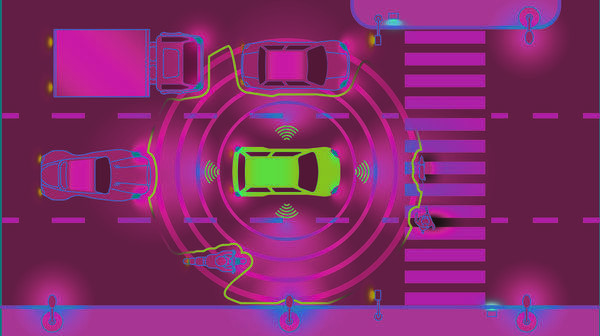
Stanford engineers create new AI camera for faster, more efficient image classification
"Stanford engineers combine two types of computers to create a faster and less energy-intensive image processor for use in autonomous vehicles, security cameras and medical devices. The image recognition technology that underlies today’s autonomous cars and aerial drones depends on artificial intelligence: the computers essentially teach themselves to recognize objects like a dog, a pedestrian crossing the street or a stopped car. The problem is that the computers running the artificial intelligence algorithms are currently too large and slow for future applications like handheld medical devices. Now, researchers at Stanford University have devised a new type of artificially intelligent camera system that can classify images faster and more energy efficiently, and that could one day be built small enough to be embedded in the devices themselves, something that is not possible today. The work was published Aug. 17 in Nature Scientific Reports. “That autonomous car you just passed has a relatively huge, relatively slow, energy intensive computer in its trunk,” said Gordon Wetzstein, an assistant professor of electrical engineering at Stanford, who led the research." [...]

A valley so low: Electrons congregate in ways that may be useful to "valleytronics"
"A Princeton University-led study has revealed an emergent electronic behavior on the surface of bismuth crystals that could lead to insights on the growing area of technology known as “valleytronics.” The term refers to energy valleys that form in crystals and that can trap single electrons. These valleys potentially could be used to store information, greatly enhancing what is capable with modern electronic devices. In the new study, researchers observed that electrons in bismuth prefer to crowd into one valley rather than distributing equally into the six available valleys. This behavior creates a type of electricity called ferroelectricity, which involves the separation of positive and negative charges onto opposite sides of a material. The study was published in the journal Nature Physics. The finding confirms a recent prediction that ferroelectricity arises naturally on the surface of bismuth when electrons collect in a single valley." [...]

More efficient security for cloud-based machine learning
"Novel combination of two encryption techniques protects private data, while keeping neural networks running quickly. A novel encryption method devised by MIT researchers secures data used in online neural networks, without dramatically slowing their runtimes. This approach holds promise for using cloud-based neural networks for medical-image analysis and other applications that use sensitive data. Outsourcing machine learning is a rising trend in industry. Major tech firms have launched cloud platforms that conduct computation-heavy tasks, such as, say, running data through a convolutional neural network (CNN) for image classification. Resource-strapped small businesses and other users can upload data to those services for a fee and get back results in several hours." [...]

Algorithm Provides Early Warning System for Tracking Groundwater Contamination
"Berkeley Lab researchers devise system to monitor contaminant plumes. Groundwater contamination is increasingly recognized as a widespread environmental problem. The most important course of action often involves long-term monitoring. But what is the most cost-effective way to monitor when the contaminant plumes are large, complex, and long-term, or an unexpected event such as a storm could cause sudden changes in contaminant levels that may be missed by periodic sampling? Scientists at the Department of Energy’s Lawrence Berkeley National Laboratory (Berkeley Lab) and Savannah River National Laboratory have developed a low-cost method for real-time monitoring of pollutants using commonly available sensors. Their study, “In Situ Monitoring of Groundwater Contamination Using the Kalman Filter,” was published recently in the journal, Environmental Science & Technology." [...]

Physicists fight laser chaos with quantum chaos to improve laser performance
"To tame chaos in powerful semiconductor lasers, which causes instabilities, scientists have introduced another kind of chaos. High-powered semiconductor lasers are used in materials processing, biomedical imaging and industrial research, but the emitted light they produce is affected by instabilities, making it incoherent. The instabilities in the laser are caused by optical filaments; light structures that move randomly and change with time, causing chaos. Removing these instabilities has long been a goal in physics, but previous strategies to reduce filaments have usually involved reducing the power of the laser. This means it can no longer be used for many practical high-power applications, such as in ultrabright 3D laser cinema or as elements in extremely bright laser systems used in fusion reactors. Instead, researchers had to choose between a powerful semiconductor laser with poor output quality and a coherent but much less powerful laser." [...]
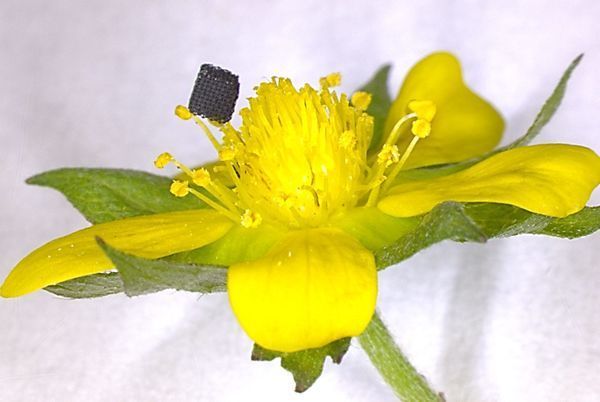
Virginia Tech researchers develop novel process to 3D print one of the strongest materials on Earth
"Researchers from Virginia Tech and Lawrence Livermore National Laboratory have developed a novel way to 3D print complex objects of one of the highest-performing materials used in the battery and aerospace industries. Previously, researchers could only print this material, known as graphene, in 2D sheets or basic structures. But Virginia Tech engineers have now collaborated on a project that allows them to 3D print graphene objects at a resolution an order of magnitude greater than ever before printed, which unlocks the ability to theoretically create any size or shape of graphene. Because of its strength - graphene is one of the strongest materials ever tested on Earth - and its high thermal and electricity conductivity, 3D printed graphene objects would be highly coveted in certain industries, including batteries, aerospace, separation, heat management, sensors, and catalysis. Graphene is a single layer of carbon atoms organized in a hexagonal lattice. When graphene sheets are neatly stacked on top of each other and formed into a three-dimensional shape, it becomes graphite, commonly known as the “lead” in pencils." [...]
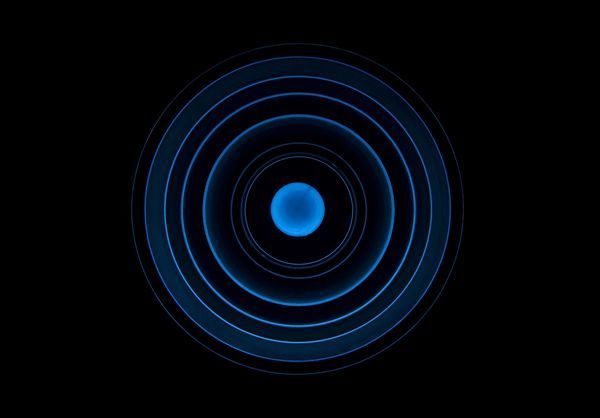
Energy-efficient spin current can be controlled by magnetic field and temperature
"SCMR effect simplifies the design of fundamental spintronic components The transition from light bulbs to LEDs has drastically cut the amount of electricity we use for lighting. Most of the electricity consumed by incandescent bulbs was, after all, dissipated as heat. We may now be on the verge of a comparable breakthrough in electronic computer components. Up to now, these have been run on electricity, generating unwanted heat. If spin current were employed instead, computers and similar devices could be operated in a much more energy-efficient manner. Dr. Olena Gomonay from Johannes Gutenberg University Mainz (JGU) in Germany and her team together with Professor Eiji Saitoh from the Advanced Institute for Materials Research (AIMR) at Tohoku University in Japan and his work group have now discovered an effect that could make such a transition to spin current a reality." [...]
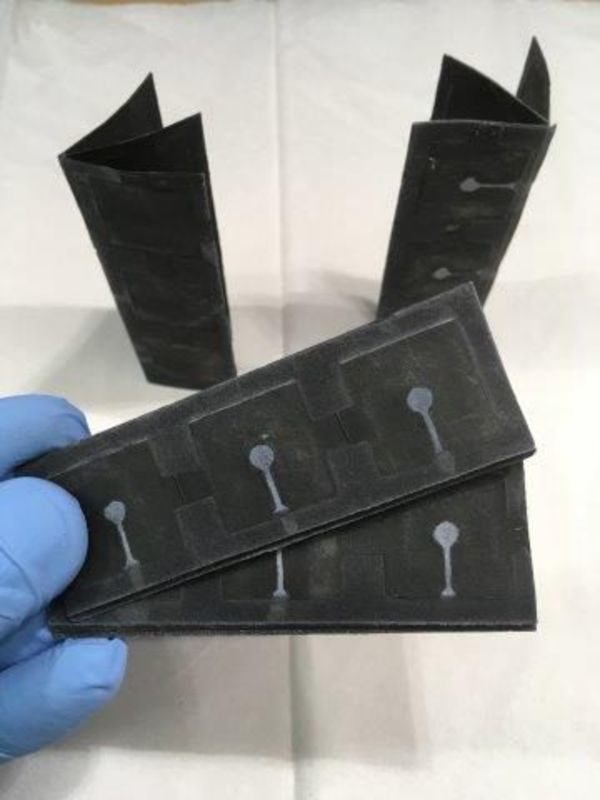
A paper battery powered by bacteria
"In remote areas of the world or in regions with limited resources, everyday items like electrical outlets and batteries are luxuries. Health care workers in these areas often lack electricity to power diagnostic devices, and commercial batteries may be unavailable or too expensive. New power sources are needed that are low-cost and portable. Today, researchers report a new type of battery –- made of paper and fueled by bacteria --- that could overcome these challenges. The researchers will present their results today at the 256th National Meeting & Exposition of the American Chemical Society (ACS). ACS, the world’s largest scientific society, is holding the meeting here through Thursday." [...]

Graphene phase modulators hold the key to faster mobile technology
"Researchers from Graphene Flagship Partners at the National Inter-University Consortium for Telecommunications (CNIT) in Italy, IMEC in Belgium and University of Cambridge in UK created and tested a graphene based phase modulator that outperforms existing silicon based ones. Modern optical data and telecommunication employ phase modulators to increase the amount of data relayed and data rate efficiency, i.e. the speed at which information is relayed. Phase modulators may work by grouping several bits of information into fewer symbols, or packets, reducing the overall size, or spectral width. The smaller the spectral width, the higher the data rate efficiency. However due to a natural trade-off this efficiency is reaching a maximum with silicon based devices, hence a more novel solution is needed to bridge the gap between the increase in demand for data and the efficiency in transmitting it." [...]

Light-Emitting Nanoparticles Could Provide a Safer Way to Image Living Cells
"A research team has demonstrated how light-emitting nanoparticles, developed at the U.S. Department of Energy’s Lawrence Berkeley National Laboratory (Berkeley Lab), can be used to see deep in living tissue. The specially designed nanoparticles can be excited by ultralow-power laser light at near-infrared wavelengths considered safe for the human body. They absorb this light and then emit visible light that can be measured by standard imaging equipment. The development and biological imaging application of these nanoparticles is detailed in a study published online Aug. 6 in Nature Communications. Researchers hope to further develop these so-called alloyed upconverting nanoparticles, or aUCNPs, so that they can attach to specific components of cells to serve in an advanced imaging system to light up even single cancer cells, for example. Such a system may ultimately guide high-precision surgeries and radiation treatments, and help to erase even very tiny traces of cancer." [...]

Scientists make leap in simulating quantum particles
"New quantum theory research, led by academics at the University of St Andrews’ School of Physics, could transform the way scientists predict how quantum particles behave. Quantum theory is a cornerstone of modern physics, explaining the behaviour of isolated particles, like the electrons that orbit atoms. It has shown us that quantum particles have great potential for applications, such as powerful quantum computers with the potential to solve complex problems much more quickly than conventional computers. In recent years, the possibility of using the states of quantum particles to hold information has become a reality in the laboratory. This has led to the development of quantum processors made of just a few quantum bits, ‘qubits’ – particles that store a particular quantum state. Unlike the bits in conventional computers, which can be either zero or one, a qubit can be in a ‘superposition’ of zero and one at the same time." [...]
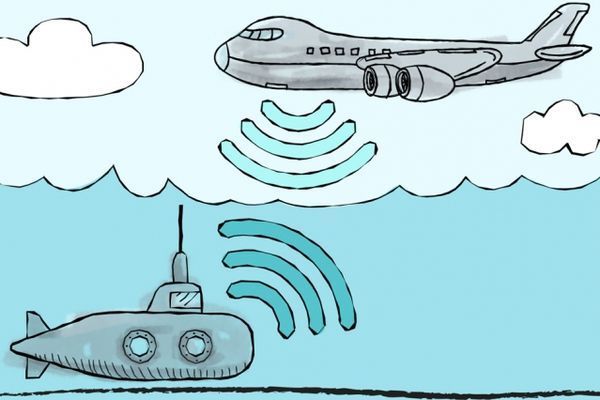
Wireless communication breaks through water-air barrier
"In a novel system developed by MIT researchers, underwater sonar signals cause vibrations that can be decoded by an airborne receiver. MIT researchers have taken a step toward solving a longstanding challenge with wireless communication: direct data transmission between underwater and airborne devices. Today, underwater sensors cannot share data with those on land, as both use different wireless signals that only work in their respective mediums. Radio signals that travel through air die very rapidly in water. Acoustic signals, or sonar, sent by underwater devices mostly reflect off the surface without ever breaking through. This causes inefficiencies and other issues for a variety of applications, such as ocean exploration and submarine-to-plane communication." [...]

Making light work of quantum computing
"Light may be the missing ingredient in making usable quantum silicon computer chips, according to an international study featuring a University of Queensland researcher. The team has engineered a silicon chip that can guide single particles of light – photons – along optical tracks, encoding and processing quantum-bits of information known as ‘qubits’. Professor Timothy Ralph from UQ’s Centre for Quantum Computation and Communication Technology said that the use of photons in this way could increase the number and types of tasks that computers can help us with. “Current computers use a binary code – comprising ones and zeroes – to transfer information, but quantum computers have potential for greater power by harnessing the power of qubits,” Professor Ralph said. “Qubits can be one and zero at the same time, or can link in much more complicated ways – a process known as quantum entanglement – allowing us to process enormous amounts of data at once. “The real trick is creating a quantum computing device that is reprogrammable and can be made at low cost.” The experiment, conducted primarily at the University of Bristol, proved that it is possible to fully control two qubits of information within a single integrated silicon chip." [...]
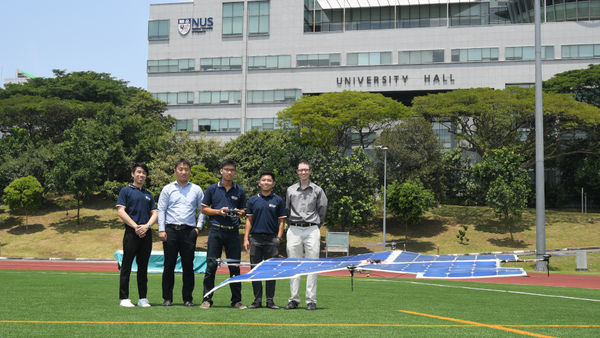
Fly high and far with Asia's first fully solar-powered quadcopter drone created by NUS students
"Aircraft that can take off and land directly without the need for a runway – such as helicopters and quadcopters – are attractive for personal, commercial and military applications as they require less physical space and infrastructure compared to traditional fixed wing planes. A team from the National University of Singapore (NUS) has achieved a major step forward in stretching the capabilities of quadcopter drones by powering the flight solely by natural sunlight. A first in Asia, the current prototype has flown above 10 metres in test flights – higher than a typical three storey building – utilising solar power with no battery or other energy storage on board. This solar-powered drone, which was developed as a student project under the Innovation & Design Programme (iDP) at NUS Faculty of Engineering, can take-off and land vertically without a runway. Constructed using lightweight carbon fibre material, the quadcopter drone weighs only 2.6 kg, and has a surface area of about 4 sqm. It is fitted with 148 individually characterised silicon solar cells and supported by a frame equipped with four rotors." [...]
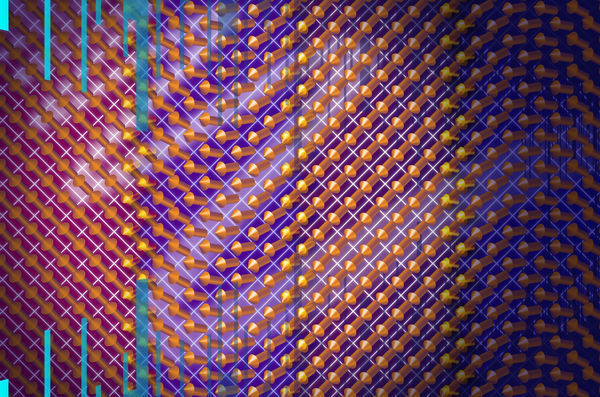
Once a Performance Barrier, This Material Quirk Could Strengthen Our Telecommunication Connections
"Researchers who study and manipulate the behavior of materials at the atomic level have discovered a way to make a thin material that enhances the flow of microwave energy. The advance, which could improve telecommunications, sheds new light on structural traits, generally viewed as static and a hindrance, that, when made to be dynamic, are actually key to the material’s special ability. The discovery, reported in the journal Nature, shows how domain walls — the naturally occurring boundaries, separating atoms with different directions of relative displacement, that create dipoles within a material — could actually be an entryway for accessing a much wider range of electromagnetic frequencies. And this access could one day expand the range of frequencies used as communications channels. In the paper, researchers from Drexel University, Bar-Ilan University in Israel, the University of California at Berkeley, the University of California at Santa Barbara, the Carnegie Institution for Science, and the University of Pennsylvania showed how a ferroelectric material can be designed in such a way that domain walls can be used to transmit microwaves with a higher degree of frequency control than the mobile devices we currently use. “As consumer demand for mobile communications increases the available wireless spectrum is increasingly congested and new technologies are needed to create adaptive, frequency-agile antennas,” said Robert York, PhD, a professor at UC Santa Barbara and a co-author of the paper." [...]
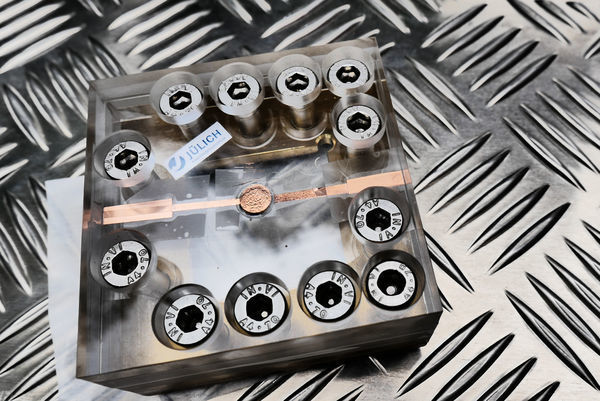
It's All in the Mix: Julich Researchers are Developing Fast-Charging Solid-State Batteries
"There are currently great hopes for solid-state batteries. They contain no liquid parts that could leak or catch fire. For this reason, they do not require cooling and are considered to be much safer, more reliable, and longer lasting than traditional lithium-ion batteries. Jülich scientists have now introduced a new concept that allows currents up to ten times greater during charging and discharging than previously described in the literature. The improvement was achieved by a “clever” choice of materials with a focus on consistently good compatibility. All components were made from phosphate compounds, which are well matched both chemically and mechanically." [...]
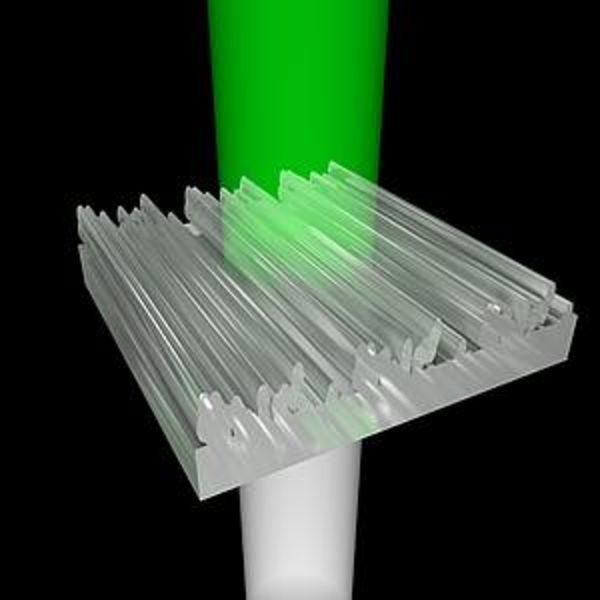
Color effects from transparent 3D-printed nanostructures
"New design tool automatically creates nanostructure 3D-print templates for user-given colors | Scientists present work at prestigious SIGGRAPH conference Most of the objects we see are colored by pigments, but using pigments has disadvantages: such colors can fade, industrial pigments are often toxic, and certain color effects are impossible to achieve. The natural world, however, also exhibits structural coloration, where the microstructure of an object causes various colors to appear. Peacock feathers, for instance, are pigmented brown, but—because of long hollows within the feathers—reflect the gorgeous, iridescent blues and greens we see and admire. Recent advances in technology have made it practical to fabricate the kind of nanostructures that result in structural coloration, and computer scientists from the Institute of Science and Technology Austria (IST Austria) and the King Abdullah University of Science and Technology (KAUST) have now created a computational tool that automatically creates 3D-print templates for nanostructures that correspond to user-defined colors. Their work demonstrates the great potential for structural coloring in industry, and opens up possibilities for non-experts to create their own designs. This project will be presented at this year’s top computer graphics conference, SIGGRAPH 2018, by first author and IST Austria postdoc Thomas Auzinger." [...]

Twisted electronics open the door to tunable 2-D materials
"Two-dimensional (2-D) materials such as graphene have unique electronic, magnetic, optical, and mechanical properties that promise to drive innovation in areas from electronics to energy to materials to medicine. Columbia University researchers report a major advance that may revolutionize the field, a "twistronic" device whose characteristics can be varied by simply varying the angle between two different 2-D layers placed on top of one another. In a paper published online today in Science, the team demonstrates a novel device structure that not only gives them unprecedented control over the angular orientation in twisted-layer devices, but also allows them to vary this angle in situ, so that the effects of twist angle on electronic, optical, and mechanical properties can be studied in a single device. Led by Cory Dean (physics, Columbia University) and James Hone (mechanical engineering, Columbia Engineering), the team built upon techniques that they previously pioneered to mechanically layer graphene and other 2-D materials, one on top of another, to form new structures. "This mechanical assembly process allows us to mix and match different crystals to construct entirely new materials, often with properties fundamentally different from the constituent layers," says Hone, leader of Columbia's Materials Research Science and Engineering Center (MRSEC), which investigates the properties of these heterostructures. "With hundreds of 2-D materials available, the design possibilities are enormous."" [...]
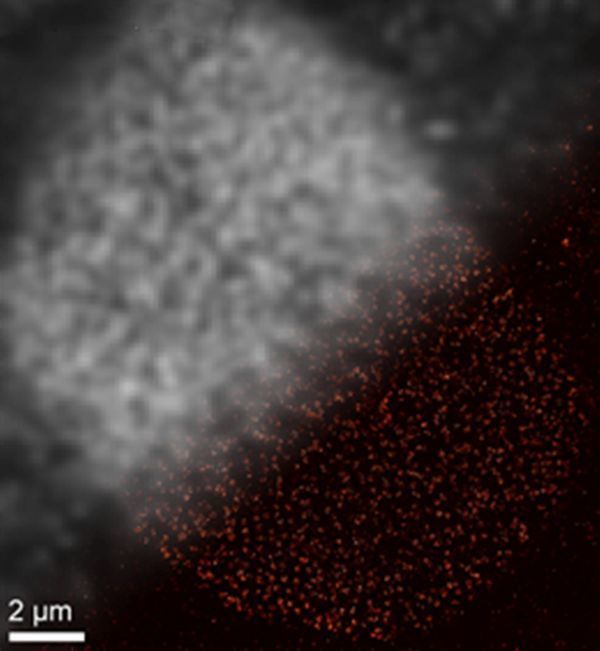
Getting even closer to the limit
"In a pioneering study, an LMU team led by Ralf Jungmann has demonstrated that the use of chemically-modified DNA aptamers as protein markers allows one to enhance the power of super-resolution fluorescence microscopy as an imaging tool. Ralf Jungmann is interested in processes that take place within spatial dimensions that are unbelievably tiny. Jungmann holds a professorship in Experimental Physics at LMU and heads a research group in Molecular Imaging and Bionanotechnology at the Max Planck Institute for Biochemistry (Martinsried), and focuses on extending the capabilities of optical microscopy. His goal is to directly visualize the molecular interactions that take place within individual cells. In order to monitor the protein networks involved in such processes, he uses short DNA strands covalently attached to various fluorescence markers as probes to locate target proteins bearing complementary DNA tags. By exploiting the sequence-specificity and versatility of DNA hybridization in this way, it is possible to image the distributions of large numbers of molecules in single cells at super-resolution." [...]

New material could improve efficiency of computer processing and memory
"A team of researchers led by the University of Minnesota has developed a new material that could potentially improve the efficiency of computer processing and memory. The researchers have filed a patent on the material with support from the Semiconductor Research Corporation, and people in the semiconductor industry have already requested samples of the material. The findings are published in Nature Materials, a peer-reviewed scientific journal published by Nature Publishing Group. “We used a quantum material that has attracted a lot of attention by the semiconductor industry in the past few years, but created it in unique way that resulted in a material with new physical and spin-electronic properties that could greatly improve computing and memory efficiency,” said lead researcher Jian-Ping Wang, a University of Minnesota Distinguished McKnight Professor and Robert F. Hartmann Chair in electrical engineering. The new material is in a class of materials called “topological insulators,” which have been studied recently by physics and materials research communities and the semiconductor industry because of their unique spin-electronic transport and magnetic properties. Topological insulators are usually created using a single crystal growth process." [...]
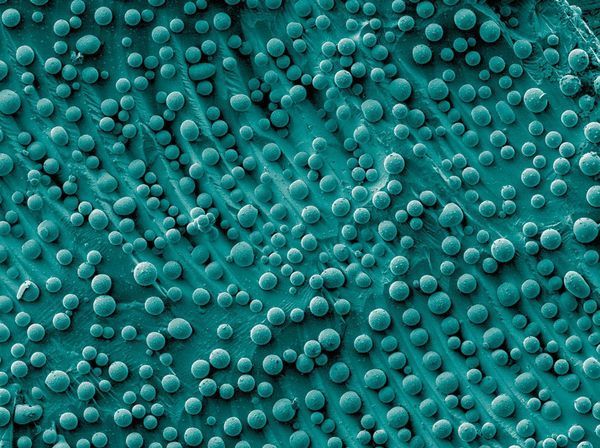
Connecting the (Nano) Dots: NIST Says Big-Picture Thinking Can Advance Nanoparticle Manufacturing
"Nanoparticle manufacturing, the production of material units less than 100 nanometers in size (100,000 times smaller than a marble), is proving the adage that “good things come in small packages.” Today’s engineered nanoparticles are integral components of everything from the quantum dot nanocrystals coloring the brilliant displays of state-of-the-art televisions to the miniscule bits of silver helping bandages protect against infection. However, commercial ventures seeking to profit from these tiny building blocks face quality control issues that, if unaddressed, can reduce efficiency, increase production costs and limit commercial impact of the products that incorporate them. To help overcome these obstacles, the National Institute of Standards and Technology (NIST) and the nonprofit World Technology Evaluation Center (WTEC) advocate that nanoparticle researchers, manufacturers and administrators “connect the dots” by considering their shared challenges broadly and tackling them collectively rather than individually. This includes transferring knowledge across disciplines, coordinating actions between organizations and sharing resources to facilitate solutions. The recommendations are presented in a new paper in the journal ACS Applied Nano Materials. “We looked at the big picture of nanoparticle manufacturing to identify problems that are common for different materials, processes and applications,” said NIST physical scientist Samuel Stavis, lead author of the paper." [...]
Modelos 3D
Com a disponibilidade de ferramentas que permitem dar azo a nossa imaginação na criação de peças 3D e espaços como o thingiverse para as publicar, esta rubrica apresenta alguns modelos selecionados que poderão ser úteis.

Xbox One controller mini wheel
"Rack and pinion steering for your xbox controller. 100 degrees of rotation. Enjoy finer control in racing games. *** Update : The frames and rack have been offset to minimize the obstruction of the "X" button [clutch in some games] while doing a hard right turn. The wheels now have stronger sections where they meet the bearing. Added a stem file for custom wheels." [...]
Documentação
A documentação é parte essencial do processo de aprendizagem e a Internet além de artigos interessantes de explorar também tem alguma documentação em formato PDF interessante de ler. Todos os links aqui apresentados são para conteúdo disponibilizado livremente pelo editor do livro.
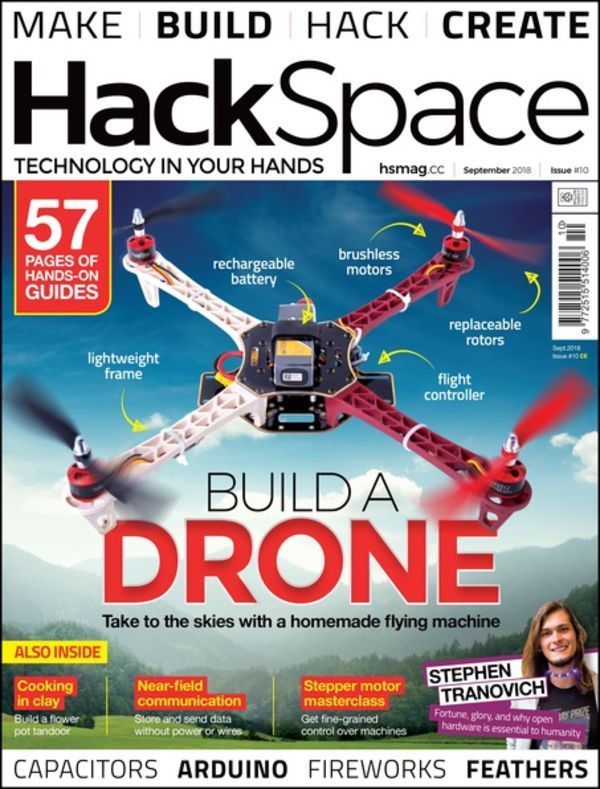
HackSpace magazine #10
"Drones, multirotors, flying machines – call them what you like – they're taking over our skies. We show you how to build your own so you can fully customise it for exactly your needs. We also chat with Stephen Tranovich about the Hackaday Prize Create great projects with NFC Strapping rockets to a Standbeest Get started with stepper motors Makers protecting the environment" [...]
Projetos Maker
Diversos Projetos interessantes.
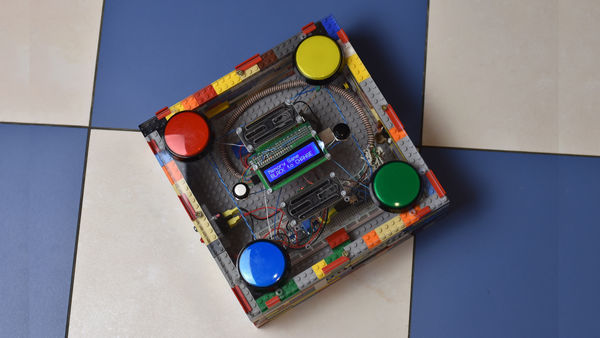
Arduino Arcade Lego Games Box
"If you have kids, you are likely facing the same issues as we did with the Lego sets you bought for them. They assemble and play with them but after a while the sets transform into a single pile of bricks. The kids grow up and you don't know what to do with this pile. We decided to recycle the unwanted Lego bricks and created an arcade game. This step by step guide is a result of several months of work to make the game repeatable and very low cost. Pretty much anyone could repeat this project!" [...]
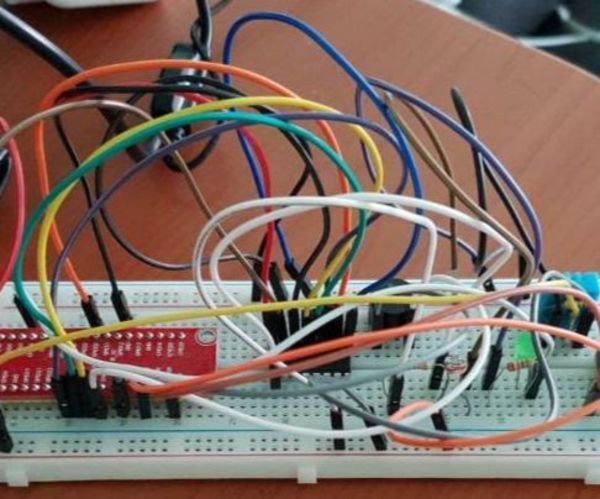
Rain Alert System
"This is a Rain Alert System, the alarm and LED will activate and warn the user that it is going to rain soon, the target audience for this application is for those people who put out their clothes to dry at home know so can keep their clothes without getting them wet beforehand. (If humidity hits > 70 buzzer will ring, if light value <300 LED lights up) This application uses a web interface hosted using IBMs node red which allows the user to control the real time state of the Buzzer & LED, and view the real time state of DHT11 & LDR sensor and also the historical state of the DHT11 & LDR sensor. We are using DynamoDB to store our LDRs light value and also our DHT11s humidity and temperature value. This application uses AWS IoTs broker service which enables our application to send and receive messages. " [...]
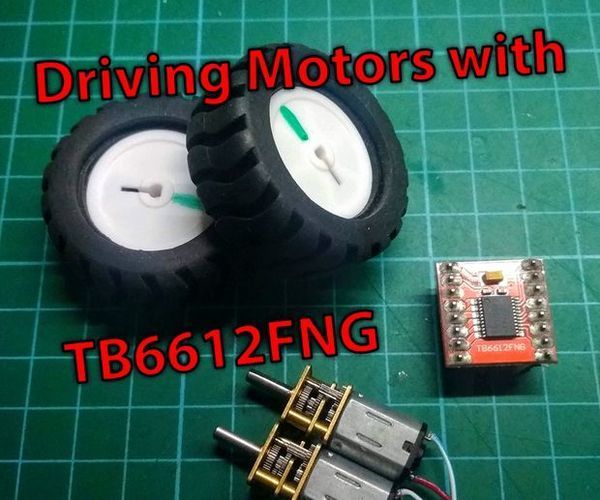
Driving Small Motors With the TB6612FNG
"The TB6612FNG is a dual motor driver IC from Toshiba. There are plenty of breakout boards out there for it and it's one of the most popular choices to drive small motors. There are plenty of of online resources on getting started witht he TB6612FNG but I decided to write this anyway to better compile what I came across. I'll be focusing on the control logic and also explain the Sparkfun TB6612FNG motor driver library in detail in this instructable. " [...]
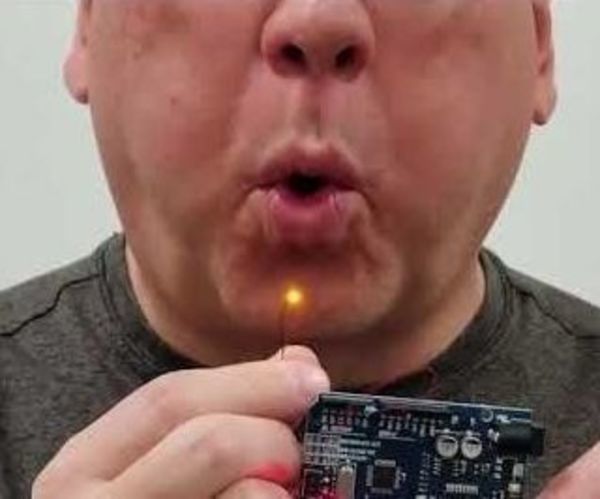
An LED You Can Blow Out Like a Candle!
"LEDs are designed to emit light, but they also make surprisingly capable sensors. Using only an Arduino UNO, an LED and a resistor, we will build a hot LED anemometer that measures wind speed, and turns off the LED for 2 seconds when it detects you are blowing on it. You can use this to make breath controlled interfaces, or even an electronic candle that you can blow out! Materials: An Arduino UNO (with USB cable to connect to your computer) A 1/4W 220 ohm resistor (https://www.amazon.com/Projects-25EP514220R-220-Re...) A pre-wired, 0402 yellow LED (https://www.amazon.com/Lighthouse-LEDs-Angle-Pre-W...) Breakaway header (https://www.amazon.com/SamIdea-15-Pack-Straight-Co...) You will also need: A computer to run the Arduino environment Basic soldering equipment/skills" [...]

NFC Timeline Radio
"In a lab project at the department of human-centered ubiquitous media we were challenged to create a modern music player which references traditional radio design. The timeframe was one semester. In order to get familiar with the potentiometers, the Arduino platform as well as the displays, we built a small prototype. We connected the potentiometer to the Arduino and wrote a sketch which sends the value of the potentiometer to the Raspberry. On the Raspberry's side, a small python script receives the data and sends it to the e-ink display. As we were still using the red-black version of the e-ink display, updating the display took 15 seconds, which we deemed to slow for our interaction scenario." [...]

The GoodNightLight: a Simple Nightlight Circuit
"Hi all, I teach a Bioinstrumentation course for middle school students in the winter as a part of Purdue GERI (Gifted Education Resource Institute). In this course, I introduce students to basics of circuits and how we use circuits in Biomedical Engineering. I've found that a nightlight is a good introductory circuit for students learning about electronics. It includes a few basic components like resistors and LEDs. It also includes a more intermediate component, namely the operational amplifier and a useful sensor, namely a photoresistor. The mechanism of the circuit shows students how we can use circuits to interact with the outside world and produce some sort of output." [...]

Pick and Place Robotic Arm
"It's night-time and you're on your desk, burning the midnight oil to finish off with your project which is due the next day. There are tons of things left to do and it seems to be taking forever to finish! Only if you had more than two hands!Psst. What if you were told that it is now possible for you to have more than two hands? What if you were told that there exists 'something' that could grab stuff for you and hand it over to you while you carry on with your work? Behold the Pick-and-Place Robotic Arm!" [...]
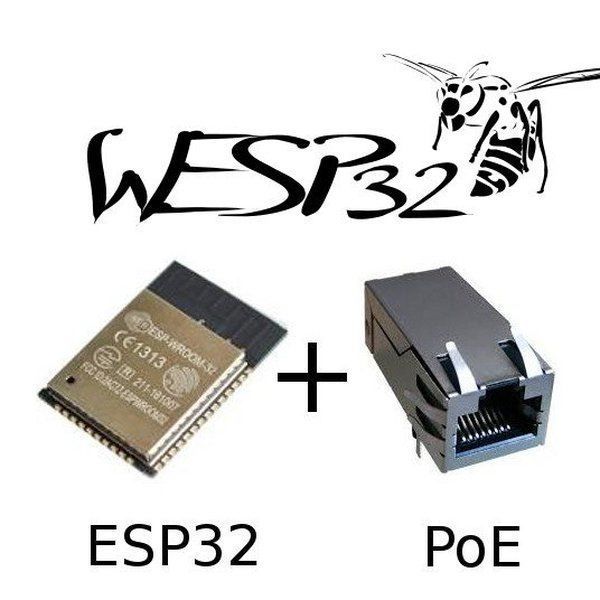
wESP32: Wired ESP32 with Ethernet and PoE
"A low cost ESP32 core board with Ethernet and PoE for convenient "single cable" deployments The ESP32 is very popular among makers as the brains for various projects. Usually it is connected to the internet with WiFi, but an often overlooked feature of the ESP32 is that it also contains an Ethernet MAC. This project aims to create a hacker friendly ESP32 + Ethernet + PoE core board to make it very easy to apply the power of the ESP32 in new areas such as home automation, factory automation, smart buildings and data centers, where the use PoE provides major advantages in installation and maintenance. Due to the high power consumption of WiFi, most ESP32 based systems already require wired power. Since you already need a wire, why not provide power and connectivity through a single wire and bypass deployment hassles associated with WiFi credentials and RF performance in hard-to-reach locations? Plus the high power available with PoE makes it possible to not only make ESP32 based sensor nodes, but to create smart network-connected actuators as well!" [...]
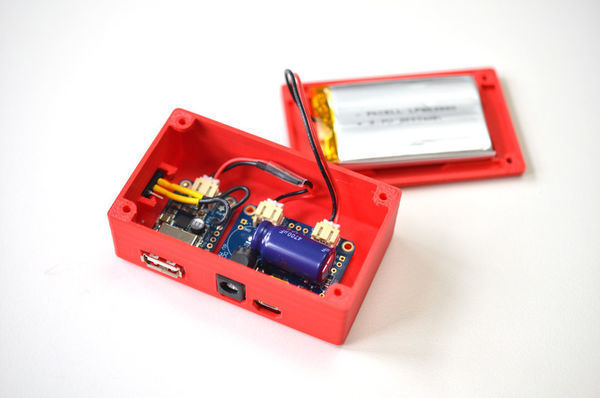
Solar Boost Bag
"Make your own backup battery and recharge it with the sun! This is an upgrade project to our original Solar Charging Handbag and uses a PowerBoost 500 Basic, a solar lipoly charger, slide switch, and 2000mAh rechargeable battery, all housed in a 3D printed enclosure. Before you begin, read through the following guides: USB, DC & Solar Lipoly Charger Adafruit PowerBoost 500 Basic" [...]
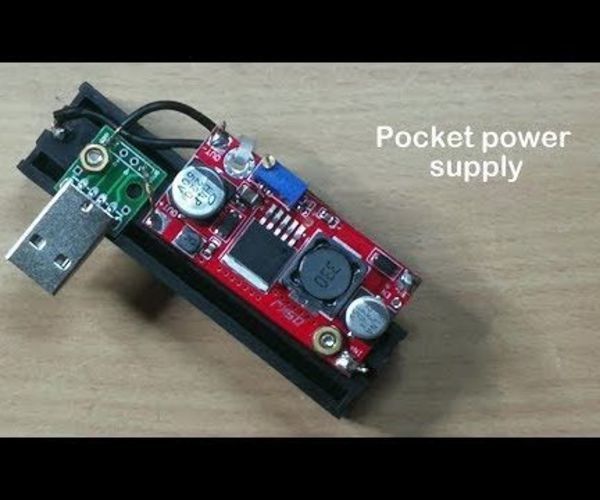
Pocket Power Supply
"This unit was a by-product of another project. I needed a small power supply on the field that can give 12VDC. I did not want to carry a huge benchtop power supply so I made a battery powered packet size power supply. I used one 18650 Li-Ion battery, which has the best energy density feature among available batteries on the market. I used a step-up boost converter module, which changes the 3.7V of the battery to a higher voltage. The output Voltage is adjustable in the range of 5 V24VDC." [...]
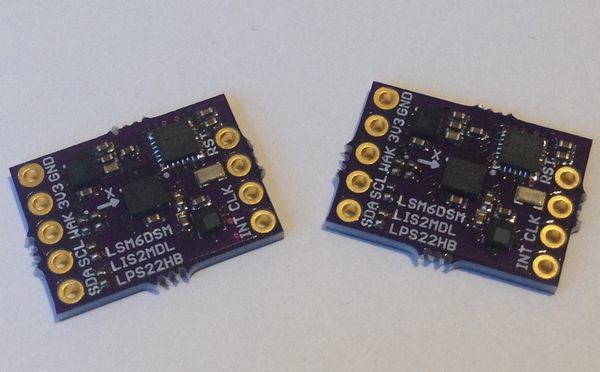
MAX32660 Motion Co-Processor
"Super-small, ultra-low-power 96 MHz Cortex M4F co-processor manages sensors and processes data allowing the MCU host attend to other things. Small breakout board using the 1.6 mm x 1.6 mm MAX32660 96 MHz Cortex M4F MCU as a co-processor to manage LSM6DSM+LIS2MDL+LPS22HB inertial sensors and provide accurate absolute orientation and altitude estimation to the host via simple I2C register reads. We have been using EM Microelectronic's EM7180 motion co-processor for absolute orientation estimation with some success. The EM7180 embeds a 10 MHz ARC processor with single-precision floating point unit (FPU) optimized for fast fusion calculations using fusion algorithms developed by PNI Corporation. The EM7180 off-loads the management of the sensors and the computationally-intensive fusion calculations from the host MCU so that accurate absolute orientation estimation in the form of quaternions or Euler angles can be read from the EM7180 by the host via simple I2C register reads. This means even a poky 8 MHz Arduino Pro Mini can obtain <2-degree accurate heading data when using the EM7180 co-processor and a suitably accurate sensor suite like the MPU9250 or LSM6DSM+LIS2MDL." [...]
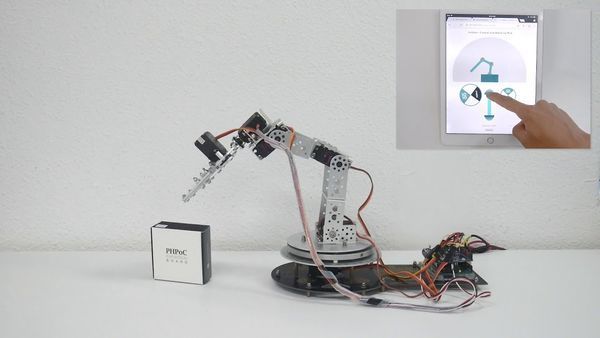
Arduino - Control Arm Robot via Web
"This project shows how to control a 6DOF robot arm via web. " [...]
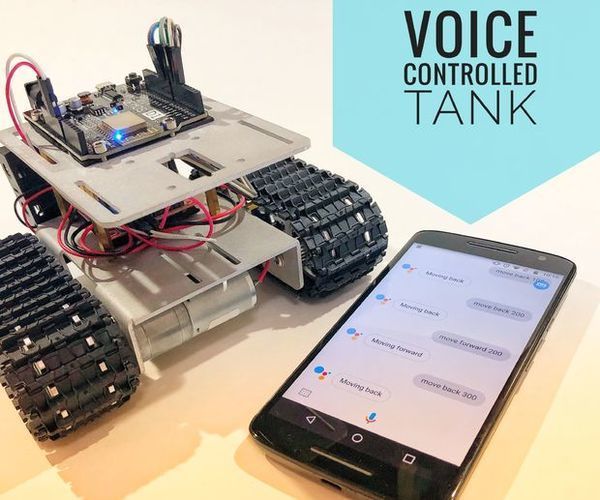
Wi-Fi Voice Controlled Robot Using Wemos D1 ESP8266, Arduino IDE, IFTTT, Adafruit.io and Google Assistant
"In this tutorial I show you how to make a voice controlled robotic tank controlled, using a smartphone, Google Assistant, IFTTT and Adafruit.io platforms. An ESP8266 Wemos D1 board was used in this project. It receives commands from a Wi-Fi network and control the speed of the motors. Other development boards might also be used (NodeMCU, Firebeetle, etc. ), and the principles presented in this tutorial can be applied on other models of robots and other IoT gadgets. I've previously designed a Blynk controlled robotic tank." [...]
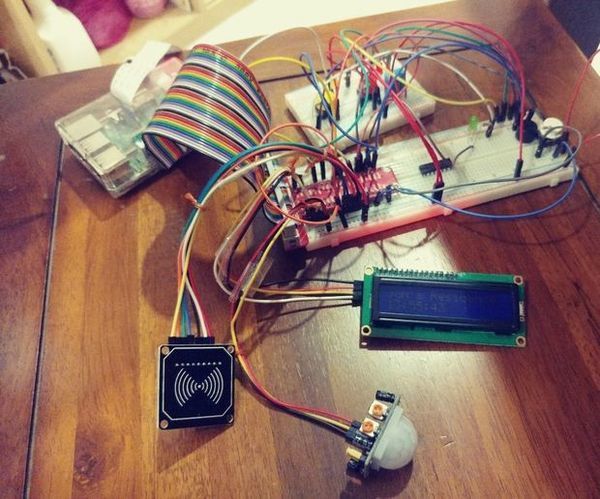
IoT Smart Home System
"This is Keefe and Jons Smart home system on iot This application is a smart home system which is divided into 2 main components. The first component is the smart door system which consists of a doorbell, access card system, LCD display to show the time, and whether the access card was allowed or denied, a LED indicator light to show that the door is unlocked, a motion sensor to capture motion outside of the house, with a camera to capture a picture when motion is detected. The second component is the smart home system which consists of 2 LEDs, 1 representing the lights in the house and the other to represent the air-conditioning of the house. 2 buttons are also included to turn the LEDs off and on to represent that the air-conditioning and lights can be turned on or off using buttons. However, using the webpage of the application, the user can turn the air-conditioning or the lights on and off remotely. A temperature and humidity sensor is also used to capture the temperature and humidity in the house and a graph of the day’s temperature can be seen on the website as well." [...]
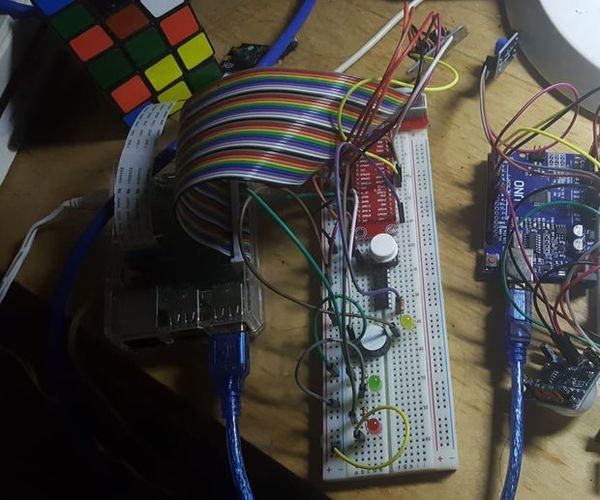
Smart Garage
"Hi everyone! This is a smart garage IoT project. Smart garage has security features such as live streaming, face recognition. Besides that, Smart Garage has a motion sensor to detect cars to allow the garage door to open. Detection of the obstacle is present when the car is reversing which allows safety checks. The distance sensor will track how many distances the car left to reverse backwards." [...]
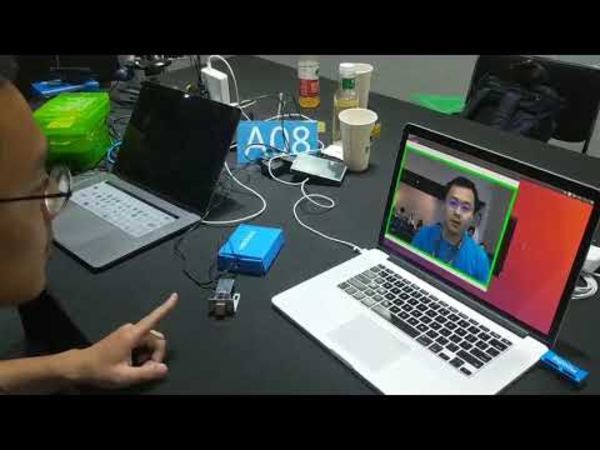
Netduino Facial Recognition WiFi Lock
"Using facial recognition to unlock a deadbolt through Netduino WiFi. Introduction: iPhone X Face ID hits people with surprise, people starting to realize through AI deep learning their face is much more unique and accurate than their fingerprint. We've built a platform that shows how the AI works on Intel Movidius NCS and Tensorflow Inception Facenet, using all the default camera that came with the development kit. This project can be extended to using facial recognition to unlock deadbolts, record entries, turn on different light themes, and many others. For the first part of the guide, we used Android to open the lock via WiFi. If you have already completed the Netduino WiFi Lock, you can skip straight to Step 5." [...]
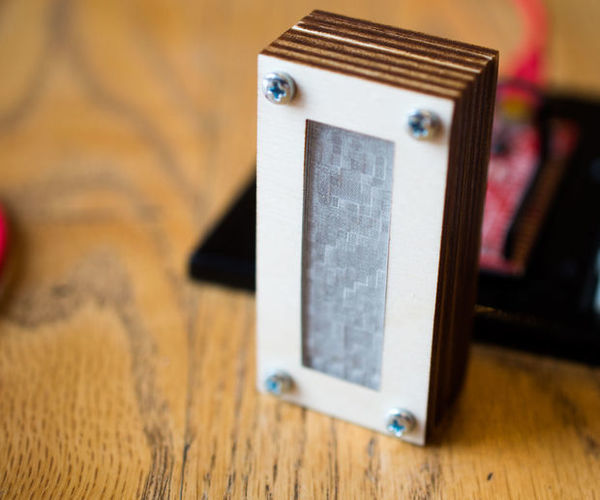
Minecraft Creeper Detector
"For a couple years, I helped the Children's Museum of Bozeman develop curriculum for their STEAMlab. I was always looking for fun ways to engage kids with electronics and coding. Minecraft is an easy way to get kids in the door and there are tons of resources for using it in fun and educational ways. Combining Minecraft and electronics was tricky, though. To help integrate Arduino projects with Minecraft, I ended up developing my own Minecraft mod named SerialCraft. The idea was you could hook up any device that used serial communication and send messages to and receive messages from Minecraft using my mod." [...]
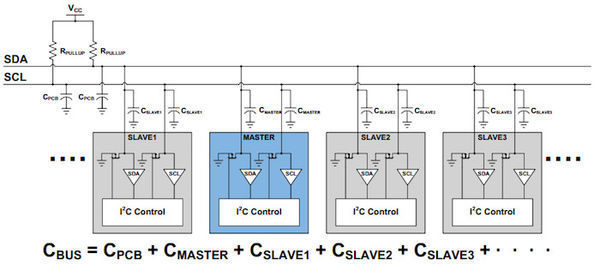
The I2C Bus: When to Use an I2C Buffer
"This article discusses the use-cases, benefits, and applications of using an I2C buffer. Of all the serial interfaces used for embedded devices, I2C stands out as my personal favorite. While it may not have the same throughput as other serial communication methods, the ability to control so many devices with only two lines, while having multiple masters, makes I2C an awesome tool for the embedded engineer trying to manage cost, pin count, and complexity. Sometimes, though, design constraints can complicate an I2C implementation. The I2C buffer is one tool that can make things a little bit easier. " [...]
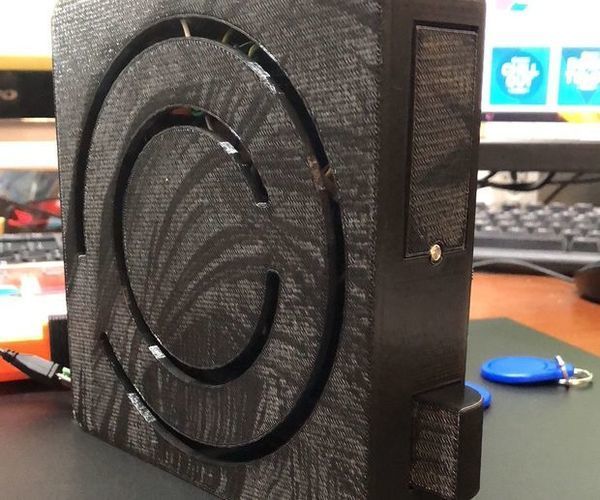
Electronic RFID Door Lock
"Today I'm going to teach you how I design and built the "ULTIMATE ELECTRONIC DOOR LOCK" follow me on this step by step tutorial, I'll explain every detail and trouble I had during the construction. I hope you enjoy it! As you can see in the picture above the case its made by 3 different pieces, the cover with a simple circular design, behind a 3mm acrilic sheet and at the end the box that contains everithing in it. Oh, almost forgot it, I will put this device INSIDE a door, not on either side, so... it will sit flush with the door face. " [...]
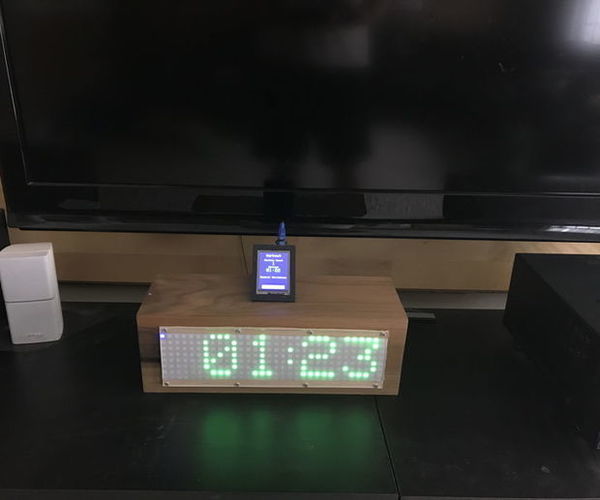
Workout Routine Timer
"Eat healthy, Stay fit, and Dont sit still all day. Good advice, eh. Well, heres an idea to help with Two of these. I do sit too much. Ive made some desktop clocks that get me up every hour, but a little more is always better. So, if its broke, fix it and if its not, break it and make it better!" [...]
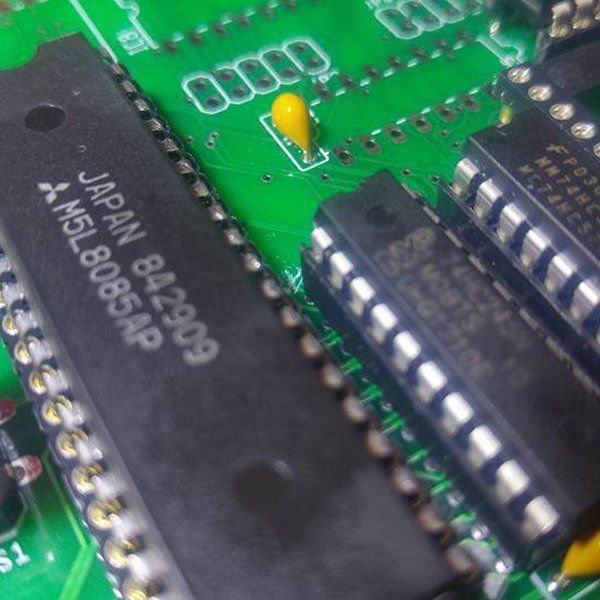
OMEN Alpha
"As-simple-as-possible computer with the 8085 CPU As-simple-as-possible computer with the 8085 CPU I write a book about old computers. Oh, sorry: I mean "vintage computers" from 80's. My primary goal is to show how one can build a 8bit computer from scratch. It means: how to set up a CPU, how to connect memories, how to connect peripheral chips, and why to connect... This computer is a "demo construction": A computer, based on 8085 CPU, with 32 kB of (EEP)ROM and 32 kB of RAM, serial connection and parallel ports. All should be as simple as possible." [...]

Build an Atari Punk Console this evening
"Do you want a fun and easy-to-build circuit? Here’s the simple, but fun Atari Punk Console – with schematics and parts list. It’s a quick build, so you can easily build it during an evening. It takes its name from the old Atari computers of the 80s because it makes similar sounds. And after my (not-so-intense) research (I basically just read about it on Wikipedia), I’ve come to learn that the circuit was first published in a Radioshack magazine in 1980. " [...]

DIY Drip Irrigation System
"Drip irrigation system is a type of micro-irrigation of soil which has the potential to save water and nutrients by allowing water to drip slowly to the roots of plants. This leads to the wise use of water and also makes water reach the roots of plants and minimize evaporation. Drip irrigation systems distribute water through a network of valves, pipes, tubing, and emitters. Its efficiency depends on how well the system is designed, installed, maintained, and operated. To explore more projects visit http://thestempedia.com/projects. " [...]

Run a C program bare metal on an ARM Cortex M3
"The goal of this article is to run a C program bare metal on an ARM Cortex M3. We will go through the assembler code generated from a small program written in C and come up with the prerequisites that must be in place in order for it to run. " [...]
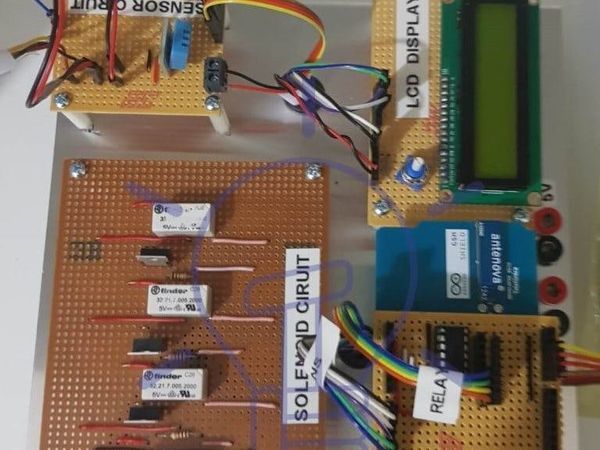
Automatic Plant Watering and Irrigation System
"Build your own automatic plant watering system. Introduction In daily operation related to watering the plants are the most important cultural practice and the most labour-intensive task. No matter whichever weather it is, either too hot and cold or too dry and wet it is very crucial to control the amount of water reaches to the plants. So, It will be effective to use an idea of automatic plant watering system which waters plants when they need it. An important aspect of this project is that: “when and how much to water”. To reduce manual activities for the human to watering plant, an idea of plant watering system is adopted." [...]
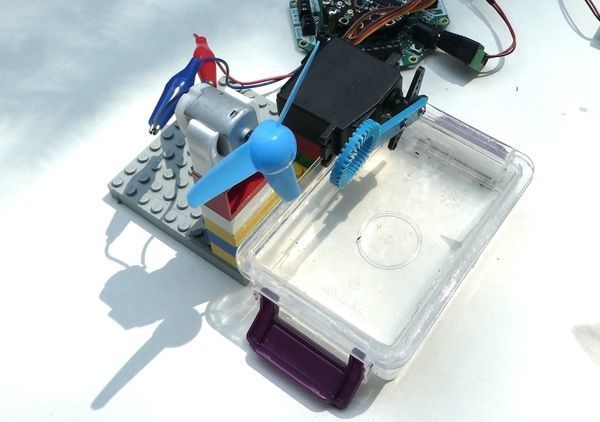
Make It Bubble
"Who doesn't love getting a bottle of bubbles to have fun with friends and pets? What's that? You get tired of all that blowing? Circuit Playground Express comes to the rescue. Along with the Crickit robotics controller, you can build a simple robot that dips the wand in bubble solution and blows the bubbles for you! Great at parties!" [...]
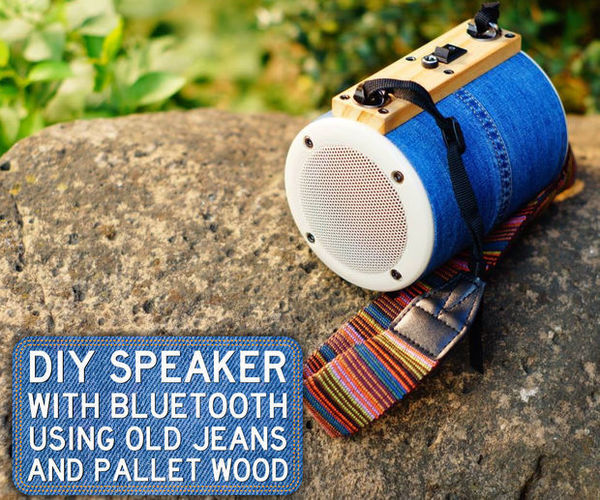
DIY Bluetooth Speaker From Old Jeans and Pallet Wood
"When creating this instructable, my main aim was to create such guide, which will allow everyone to receive final product, which will look like a factory made one no rough edges, dangling wires and glue blobs around, and I have made it! People who see this speaker for the first time are asking where you get it, how much does it costs? Moreover, when I show them photos of the making in the process, they feel quite shocked. Therefore, in this guide, I will explain how to make very cool looking (and sounding too) Bluetooth speaker using old jeans, pallet wood and other non-expensive materials. Note: While I have used a $10K CNC for making some parts, you do not need it at all, you will get exact same look and sound by just using simple hand drill, and I will show you how. No advanced woodworking or electronics skills are required." [...]

Matriz Led 5x4 Digispark
"Bicycle Directional LightsFantastic Auto Lights Following the theme of charlieplexing, searching the network I found a circuit of a led matrix, in which text can be moved, the matrix is 4x5 and only uses 5 pins, ideal for use with the digispark plate as in the previous topics . The materials for this project are: 1 protoboard 1 digispark (you can also use any arduino) 5 resistances of 100 ohms 20 ultra bright leds several connection cables" [...]

DIY Light Sculpture
"In this project, we’ll create a beautiful desktop light sculpture by edge-lighting laser cut acrylic with addressable LEDs. This project is embedded with a QDuino Mini, 8x8 Adafruit Neopixel Matrix, potentiometer, momentary pushbutton, and switch. " [...]

Coffee Table With Infinity Mirror From Casino Roulette
"How to make coffee table with infinity mirror effect from real casino roulette. I found a broken casino roulette and used a mirror and a round glass covered with solar window film to turn it into a cool coffee table. " [...]
That's all Folks!


